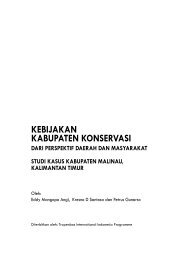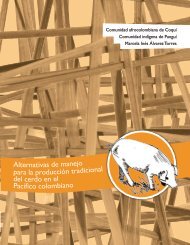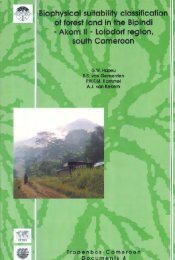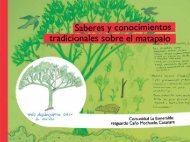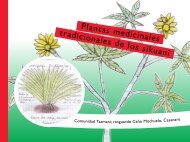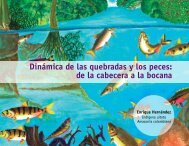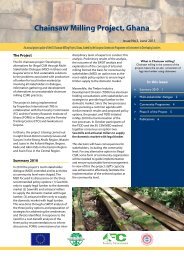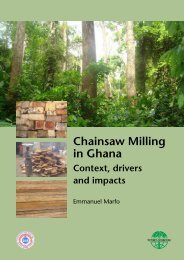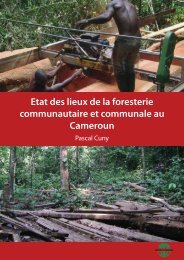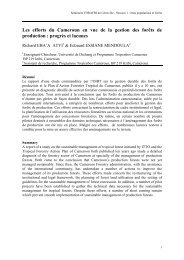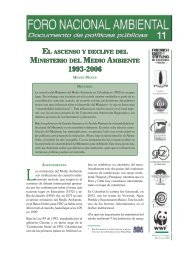Download the publication - Tropenbos International
Download the publication - Tropenbos International
Download the publication - Tropenbos International
You also want an ePaper? Increase the reach of your titles
YUMPU automatically turns print PDFs into web optimized ePapers that Google loves.
General introduction<br />
least 3 duplicates were taken for each fertile specimen. Taking into consideration <strong>the</strong><br />
fact that <strong>the</strong> quality of <strong>the</strong> specimens and <strong>the</strong> label data determine <strong>the</strong> amount of<br />
information available for future reference, each specimen was as representative as<br />
possible with a good field description, and was tagged with a unique collection<br />
number. Each ecological specimen was also given a unique collection number that<br />
was made of <strong>the</strong> sample/plot code ending with an X and followed by <strong>the</strong> collection<br />
number. For example, KRIBI1X1 would mean ecological specimen number 1<br />
collected in Kribi in plot 1. The X was used to differentiate <strong>the</strong> ecological specimens<br />
from <strong>the</strong> normal herbarium specimens which were numbered by <strong>the</strong> collector<br />
name/initials followed by <strong>the</strong> collection number (e.g. Tchouto 2766).<br />
Figure 1.2. Botanical and ecological survey plots and samples<br />
The credibility of a plant species checklist depends largely on <strong>the</strong> level of reliability<br />
of <strong>the</strong> identification of <strong>the</strong> species that it is made of. Therefore, a poor identification<br />
of specimens can easily mislead and upset <strong>the</strong> outcome of a biodiversity assessment.<br />
In order to avoid/reduce mistakes in identification, <strong>the</strong> determination of specimens<br />
was done at 3 levels. In <strong>the</strong> field by <strong>the</strong> principal botanist and tree spotter, in<br />
herbaria in Cameroon (Kribi, Limbe and Yaounde) and in Wageningen by senior<br />
botanists and family specialists. During <strong>the</strong> identification, specimens were allocated<br />
codes to reflect <strong>the</strong> confidence with which <strong>the</strong>y were identified. The identification<br />
codes (ID) provide <strong>the</strong> means to filter out dubious determinations from sample/plot<br />
records prior to analysis. ID were applied at individual plant level and were written<br />
on <strong>the</strong> paper by <strong>the</strong> identifier (e.g. ID = 1 for full name with confidence, 2 for genus<br />
13



